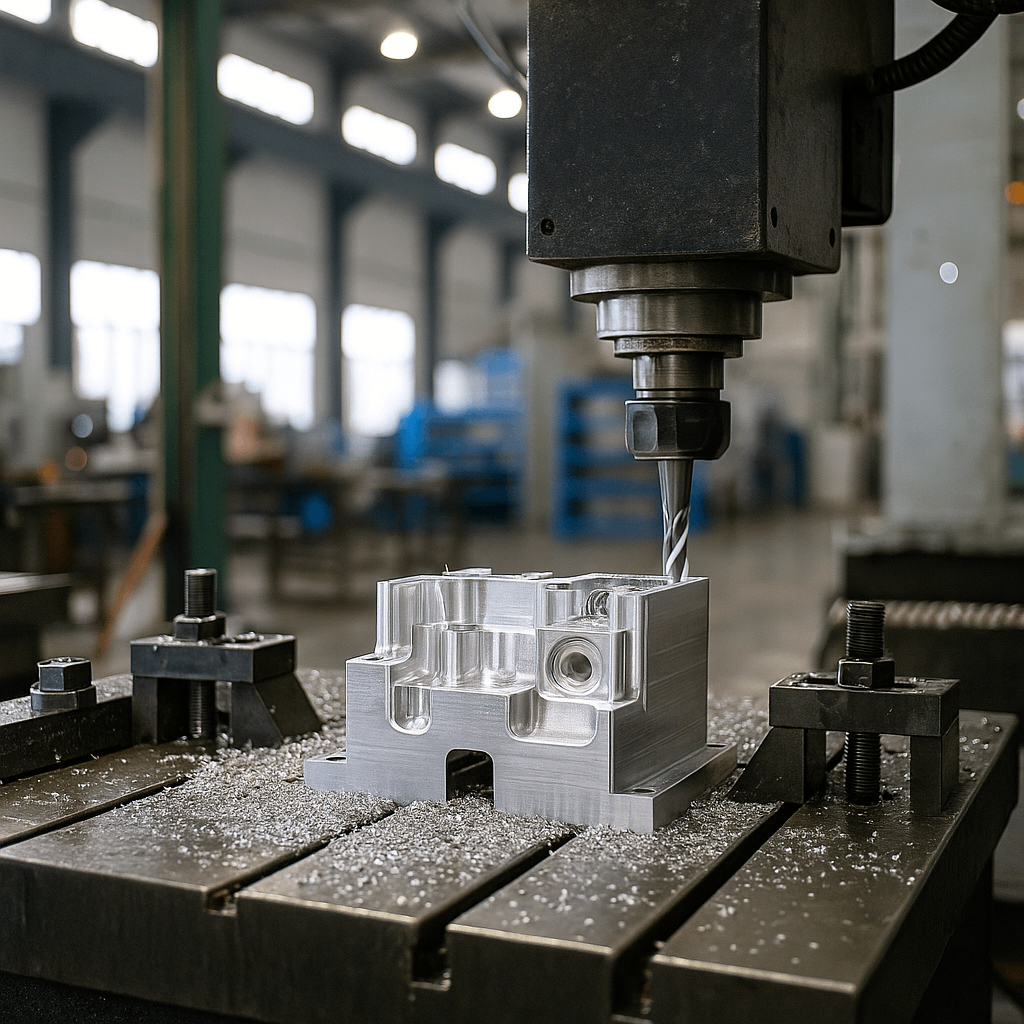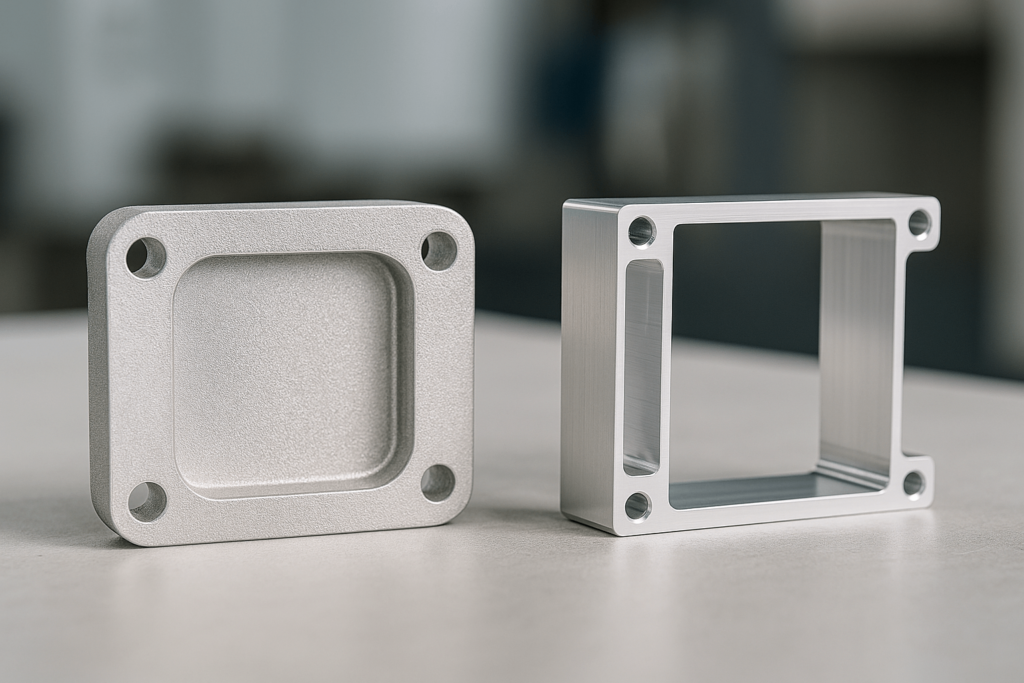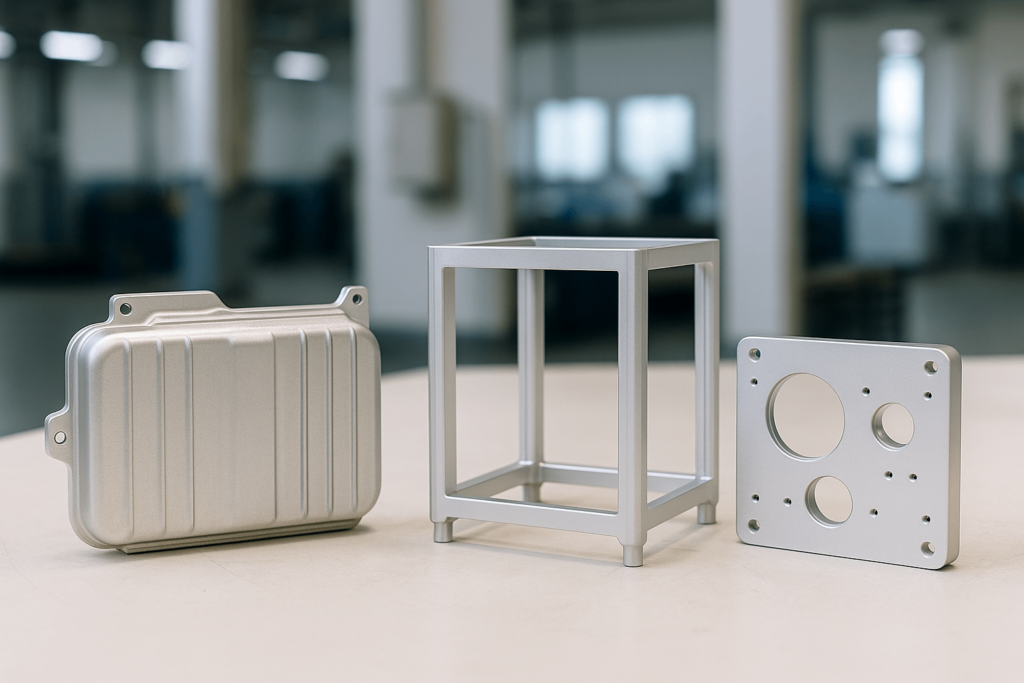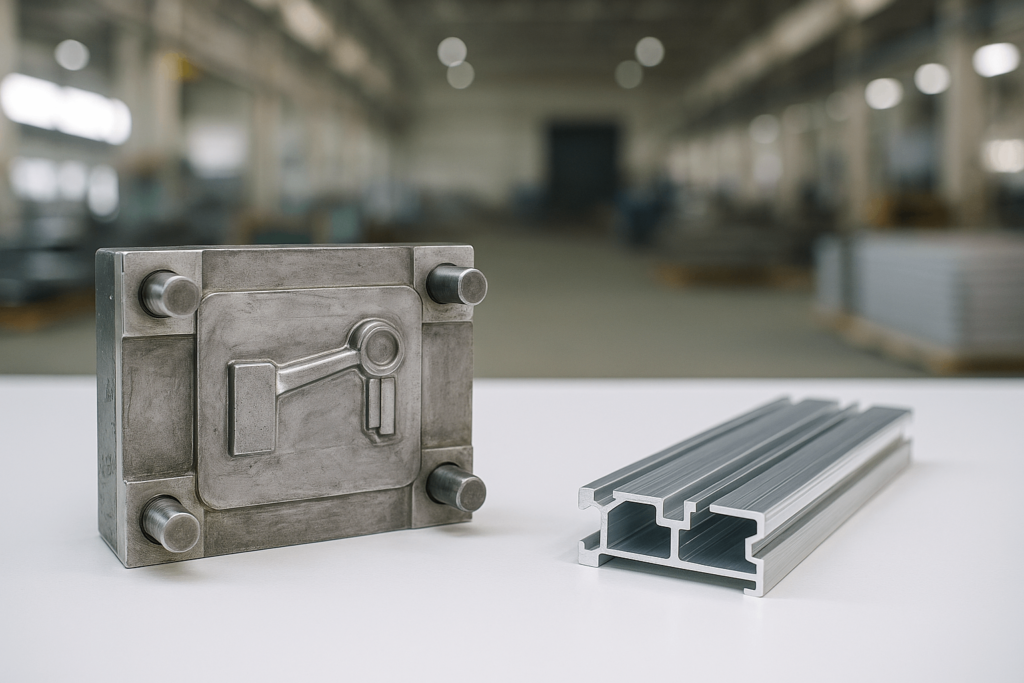Why This Guide Matters to Overseas OEM & Wholesale Buyers
Buyers comparing aluminum vs cast aluminum aim to avoid poor performance, cost, and delays — not study metallurgy.
At YISHANG, we regularly support global procurement teams in deciding between cast aluminum and wrought aluminum based on their volume, use case, and finishing expectations—not just the quote.
This guide answers the critical question: Which aluminum process gives you the best value in your actual sourcing context?
Aluminum vs Cast Aluminum: Know the Process Before You Compare Price
Too often, buyers list “aluminum” in an RFQ with no reference to processing method. But cast aluminum vs aluminum (wrought) can mean very different cost and performance outcomes.
Cast aluminum (e.g., A356, A380) involves pouring molten aluminum into molds. It’s best for intricate shapes and high-volume projects, but prone to porosity and limited in structural integrity.
Wrought aluminum (e.g., 6061, 7075) is extruded or forged. It’s stronger, weldable, and preferred in structural or visible parts.
Understanding this distinction helps prevent design errors, finish problems, and failure in the field.
Procurement Impacts of Aluminum Casting vs Machining
Cast Aluminum: Good for Large Runs, But Less Flexible
For batch quantities above 1,000 pcs, die casting cast aluminum (like A380) becomes cost-effective. But factor in:
4–6 weeks tooling development (non-refundable upfront cost)
Risk of trapped gas causing poor surface finish or structural porosity
Limitations in welding and anodizing, unless post-machining is applied
This process is well-suited for decorative parts or enclosures—not high-load or high-precision components.
Wrought Aluminum (CNC / Extrusion): Fast, Clean, Reliable
6061-T6, 5052, and 7075 aluminum alloys are ideal for CNC machining or extrusion. This route is faster and flexible:
Production lead time: 7–15 days (no molds)
High precision (±0.01mm), perfect for assemblies
Ideal for anodizing (corrosion resistance and cosmetic appeal)
This route benefits startups, OEMs with multiple SKUs, or anyone requiring rapid iteration.

Cast Aluminum vs Wrought Aluminum — What Really Matters
| Criteria | Cast Aluminum | Wrought Aluminum (CNC/Extruded) |
|---|---|---|
| Cost per Part (Large Vol) | Lower after tooling | Higher, but no tooling |
| Initial Investment | High (molds $800–$3,000) | Low (no molds needed) |
| Surface Finish | Requires coating or machining | Anodizing-ready, brushed finishes |
| Welding Capability | Limited (porosity risk) | Excellent (6061, 5052 preferred) |
| Tolerance Range | Medium (±0.2 mm typical) | High precision (±0.01 mm) |
| Failure Risk | Higher in structural use | Low, reliable under load |
| Best For | Decorative, enclosures | Structural parts, assemblies |

Real Examples: How Procurement Teams Made the Right Call
EV Housing in Coastal Market — From Powder Failure to Anodizing
A European energy hardware distributor used A380 cast aluminum for EV charger housings. But poor powder coat adhesion in humid environments led to corrosion. Switching to 6061-T6 avoided 18 months of rework and improved acceptance.
Medical Cart Frames — Fatigue Cracks from Casting
A medical OEM in Australia used cast aluminum frames. Weld joints failed in fatigue testing. The solution: 6061 extrusion + TIG welding, resulting in near-zero defects and smoother assembly integration.
Note: Cast aluminum should generally be avoided for mission-critical medical, safety, or outdoor components subject to vibration, temperature swings, or mechanical stress.
POS Retail Bases — Decoration Wins Over Load Capacity
A U.S. distributor ordered 2,500 display bases. Load-bearing wasn’t critical. Casting with A356 plus powder coating cut costs by 23% compared to CNC, with no structural complaints.

Buyer-Centric Checklist: Ask These Before You Quote
Volume: Is your forecasted demand >1,000 pcs per SKU?
Yes → Consider cast aluminum with mold investment
No → Wrought aluminum saves cost and time
Finish Needs: Is anodizing or brushing required?
Go with CNC/extruded aluminum
Assembly Consideration: Will you weld or mechanically join components?
Prefer 6061 or 5052 (wrought)
Speed of Delivery: Need parts in 10–15 days?
CNC = faster. Cast = longer due to tooling
Field Use Risk: Is the part structural or under load?
Choose wrought aluminum
Design Tweaks That Cut Cost — Expert Tip
These case studies highlight the results—now, here are actionable design tweaks to get there faster.
Before confirming RFQ specs, consult with your manufacturer. For instance:
Add draft angles (2–3°) for casting release
Avoid deep cavities that slow CNC cycles
Choose corner radii that reduce tool wear
YISHANG supports clients during DFM (design for manufacturing) to reduce per-unit cost and improve yield. That’s how we helped one U.S. client cut their enclosure cost by 18% just by tweaking 3D geometry.
Summary: Let Application, Not Price, Drive Your Aluminum Choice
Chasing the lowest price often leads to rework, delays, or product recalls.
Focus on matching aluminum type to:
Structural demands (fatigue, load, weldability)
Finish goals (brushed, anodized, coated)
Lead time and MOQ flexibility
If you’re not sure which route fits best, let us help.
Let YISHANG support your next aluminum sourcing decision. Send us your drawing — we’ll recommend the most cost-effective production route.
Frequently Asked Questions (FAQ)
Q1: Is cast aluminum weaker than wrought aluminum?
Yes, cast aluminum generally has lower tensile strength and is more prone to porosity, making it less suitable for structural or high-load parts compared to wrought grades like 6061 or 7075.
Q2: Can cast aluminum be anodized?
Technically yes, but with limited success. Due to surface porosity and alloy composition, cast aluminum does not anodize as evenly or attractively as wrought grades.
Q3: What’s the melting point of aluminum in both forms?
Both cast and wrought aluminum alloys have melting points between 615°C and 660°C depending on alloy composition.
Q4: Can you cut aluminum with a plasma cutter?
Yes, but with care. Plasma cutting works best on thicker sheets. For precision edges, CNC or laser cutting is preferred.
Q5: Is aluminum a non-ferrous metal?
Yes. Both cast and wrought aluminum are non-ferrous, meaning they contain no iron and resist rust.
Q6: Can aluminum be powder coated?
Yes. Wrought aluminum like 6061 or 5052 takes powder coating well. Cast aluminum may require post-machining for best adhesion.
Q7: How do I decide between 6061 and 7075 aluminum?
| Property | 6061 Aluminum | 7075 Aluminum |
| Strength | Moderate | Very High |
| Weldability | Excellent | Poor |
| Corrosion Resistance | Good | Moderate |
| Machinability | Good | Moderate |
| Typical Use | Frames, brackets | Aerospace, high-load parts |
Q8: Can I switch from casting to machining mid-project?
It’s possible, but dimensional and surface changes must be considered. Always consult your supplier early in the design phase.


